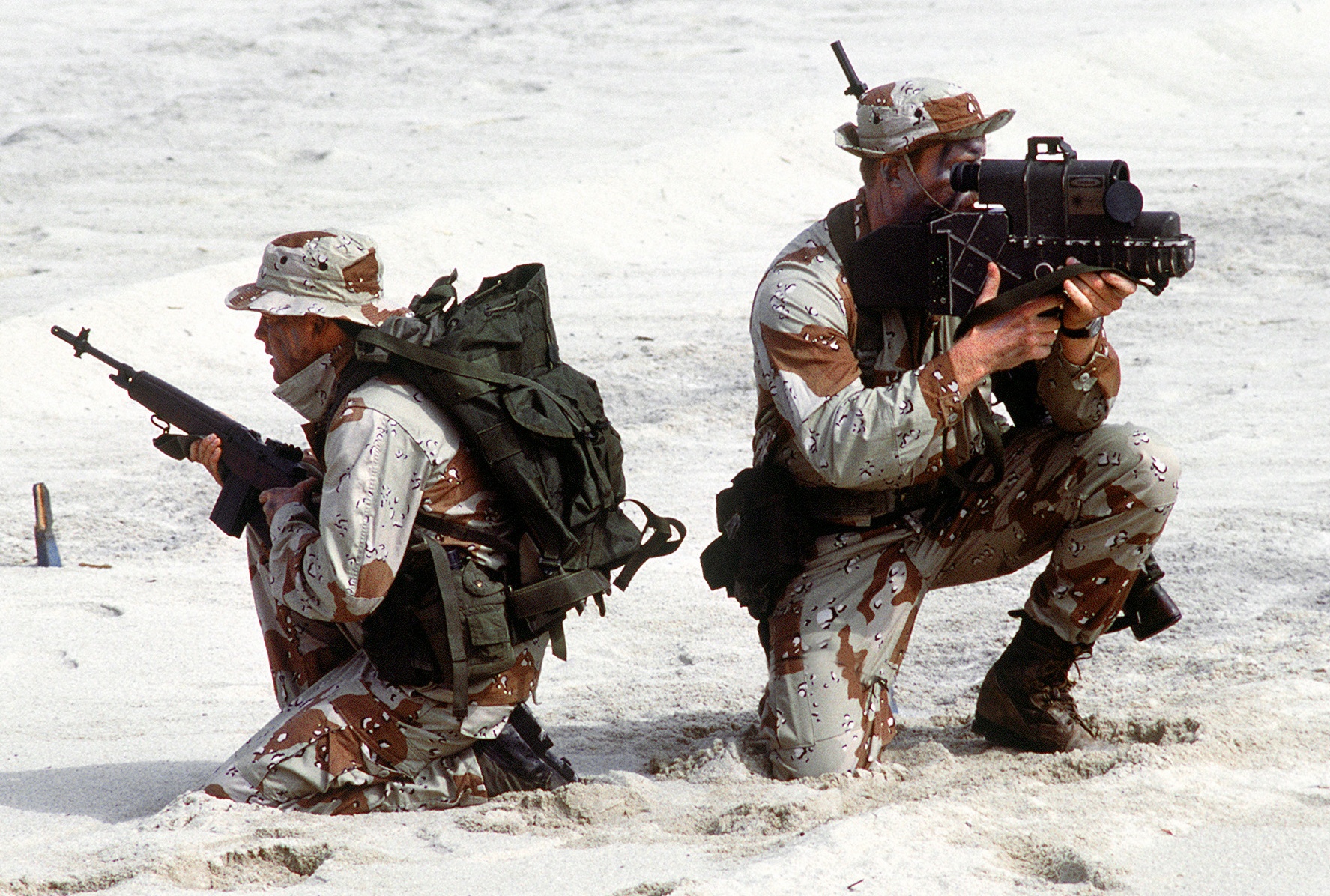SEAL Team 6 in the Spotlight: Takeaways from the Times' Article
This weekend the New York Times ran a lengthy piece about SEAL Team 6, with the dramatic subtitle “A Secret History of Quiet Killings and Blurred Lines: The unit best known for killing Osama bin Laden has been converted into a global manhunting machine with limited outside oversight.” With that framing, I anticipated the story might reveal operations involving the use of lethal force against groups or individuals not obviously within the scope of the 2001 AUMF or at least

Published by The Lawfare Institute
in Cooperation With

This weekend the New York Times ran a lengthy piece about SEAL Team 6, with the dramatic subtitle “A Secret History of Quiet Killings and Blurred Lines: The unit best known for killing Osama bin Laden has been converted into a global manhunting machine with limited outside oversight.” With that framing, I anticipated the story might reveal operations involving the use of lethal force against groups or individuals not obviously within the scope of the 2001 AUMF or at least in geographic locations other than those where we have long known that AUMF-covered operations take place. Neither proved to be the case, however. Notwithstanding the sizzling subtitle quoted above, there is no big reveal of that kind. But if not that, then what?
It seems to me there are two distinct stories woven together in this article. One is important and reasonably well-established, yet also prosaic and not a great fit with the dramatic headline quoted above. The other certainly fits the headline, but it is not at all well-established.
The first story: Overuse of SEAL Team 6 for run-of-the-mill operations. The prosaic story concerns the fact that SEAL Team 6 has (or at least had) a high operational pace, at least in part because commanders began using it to go after not just high-value targets but also lower tier, even run-of-the-mill, figures. This raises questions about the costs of wear-and-tear in general and, more specifically, about possible negative impacts on core mission capabilities. All of which is important, though not particularly surprising. Similar concerns have been expressed about JSOC more generally, and much attention has been paid to the notion that in counterinsurgency and counterterrorism environments special operations capabilities are especially valuable.
The second story: Is there a systematic problem with LOAC violations? The less-established but more-provocative story woven into the article involves speculation that SEAL Team 6 operators have violated the law of armed conflict by using lethal force improperly during raids. There is one specific claim to this effect involving the possible execution of a captive during a hostage rescue. And then there are some general gestures in a similar direction, including passages emphasizing that operators may be trained to fire multiple shots or make multiple slashes to ensure lethality when attacking, and another part discussing the use of lethal force against a sleeping enemy. This is mixed in with discussions of harm to civilians, including episodes of mistaken identity, as well as suggestions that post-incident investigations of alleged crimes might not be pursued properly given that they often are conducted by JSOC.
All of which is important and worthy of discussion. But similar questions can be raised—and indeed routinely are raised—about the conduct of a wide range of ground forces. The interesting question is whether there is something about JSOC in general, or SEAL Team 6 in particular, that presents a more acute version of the general problem of ensuring LOAC compliance. The article implicates that question, but does not actually answer it (to be clear, the authors don’t claim to be answering it…though the headline (no doubt supplied by the editors) certainly implies otherwise).
Having said all that, I want to close by highlighting a few additional issues raised by the article:
Unnecessary revelation of means-and-methods? I was quite surprised by a passage in the article electing to tell the public that Team 6 at times enhances the cover of intelligence-collectors positioned at U.S. embassies by pairing male and female operators in a manner called “profile softening.” Profile softening is a smart tactic, designed to throw foreign counterintelligence services off their scent. There is nothing illegal or unethical about the practice, and it’s just not clear to me what purpose is served by spotlighting it in this way. If one thinks there is something problematic or otherwise newsworthy about JSOC engaging in intelligence collection, that is a subject that can be discussed and reported upon without getting into details as to how personnel try to maintain cover.
Is Congress asleep at the switch? The article takes a passing swipe at Congress, stating that “overseers do not regularly examine the unit’s operations.” The authors are quite right to raise the question of congressional oversight of JSOC in general (not just SEAL Team 6). But is it really true that overseers do not regularly examine the unit’s operations? The article quotes Harold Koh claiming that Congress “notoriously doesn’t want to know too much” about such activities. I suspect that SASC and HASC members and staff might have a different view on that question, and it would be very interesting to hear their perspectives on the point. After all, the NDAA a few years ago included a provision compelling relatively-granular reporting to SASC and HASC in cases involving the use of lethal force by special operators outside of Afghanistan. It appears that there were some compliance problems early on with this provision, but I’ve heard that is no longer the case. At any rate, it would be very useful to know how things have progressed since then.



.jpg?sfvrsn=5a43131e_9)

